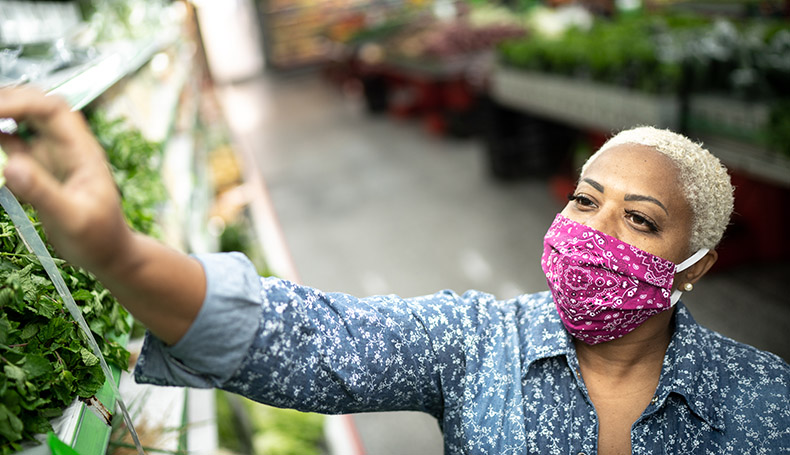AARP Hearing Center
Older Adults on SNAP: Who Are They, and What Do They Need During the COVID-19 Pandemic?
By Lynda Flowers, Olivia Dean, Carlos Figueiredo, July 16, 2020 08:00 AM

In the face of the outbreak, AARP is providing information and resources to help older people and those caring for them to protect themselves from the virus and prevent it from spreading to others. You can find AARP's coronavirus resources at https://www.aarp.org/coronavirus/.
The Supplemental Nutrition Assistance Program (SNAP)—formerly food stamps—helps millions of low-income households afford food, including 8.7 million households with at least one eligible adult age 50 or older. During the COVID-19 crisis, their needs continue to evolve and grow. Here’s what we know about these older SNAP households and what they need at this point to weather the pandemic.
Most older SNAP enrollees live alone. In 2018, over three-quarters of SNAP households with adults ages 50 and older were single-person households. Living alone during the COVID-19 pandemic can be difficult for older adults who are practicing social distancing while trying to meet basic needs, like shopping for food. Increasing SNAP benefits during the pandemic could help older enrollees stock up on the food they need, allowing them to take less frequent trips to the grocery store and therefore reduce their risk of exposure to the virus.
Many older SNAP households include an older person living with a disability. One-fifth of households with adults ages 50 and older include at least one older adult with a disability. Food insecurity is more common and severe among people with disabilities, making these households particularly vulnerable. Malnutrition resulting from severe food insecurity can weaken the body’s immune system, making an individual more susceptible to disease. As COVID-19 continues to ravish the nation, it is imperative that people have the resources they need to access sufficient and nutritious food to support a robust immune system.
Older SNAP households need increased benefits during the pandemic. SNAP is helping many low-income older households buy food during the current public health emergency, but the benefit is not nearly enough to meet the need. The federal government gave many SNAP recipients a much-needed benefit boost in April, up to the maximum allowable benefit per household size. However, nearly a third of households with adults ages 50 and older did not benefit from the increase because (as the poorest of SNAP households) they were already receiving the maximum benefit. An additional one-sixth of older SNAP households receive the minimum benefit—only $16 in most states—despite having incomes below 130 percent of the Federal Poverty Level. Increasing both the maximum and minimum SNAP allotments during this emergency is important to help people cover food costs.
As the pandemic wears on, food needs continue to grow alongside high unemployment and rising food prices. Policy makers should act now to strengthen SNAP during this crisis and ensure that this critical safety net is able to meet the growing demand.
*** Data in this blog come from a recent AARP Public Policy Institute Fact Sheet on the characteristics of older SNAP households and the benefits they receive. The Fact Sheet includes both national and state-level data. ***


































































